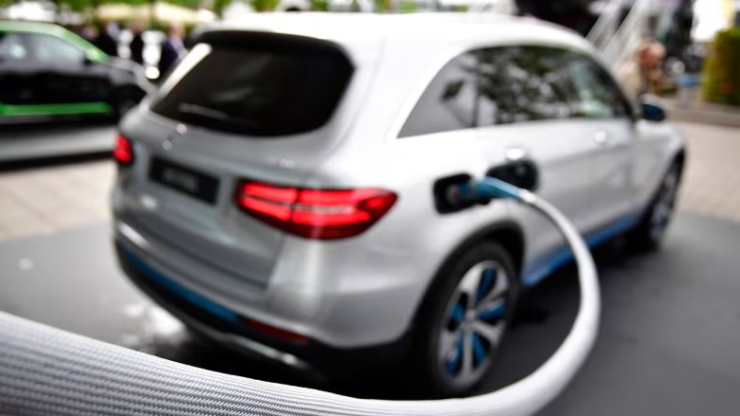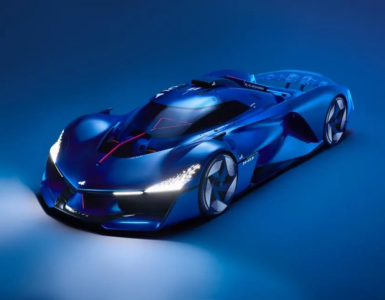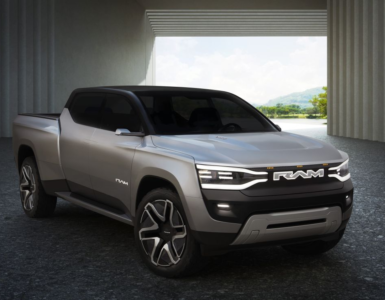Why Canada needs both EVs and hydrogen fuel cell cars to meet emission targets – CBC.
As the federal government pours billions into a new electric vehicle (EV) battery plant in St. Thomas, Ont., industry analysts say we’ll need both electric and hydrogen-powered vehicles — and to change our habits — to meet Canada’s zero-emission commitments.
The Trudeau government has two sets of targets: One for light-duty vehicles (personal vehicles and sedans up to Ford F250-type trucks), and another for medium- and heavy-duty vehicles (Ford F450-type trucks and tractor-trailers).
By 2035, all new light-duty vehicles sold in Canada will need to be zero emission. By 2040, the regulations will apply to all new medium- and heavy-duty vehicles.
🔥 What about we co-host a webinar? Let's educate, captivate, and convert the hydrogen economy!
Hydrogen Central is the global go-to online magazine for the hydrogen economy, we can help you host impactful webinars that become a global reference on your topic and are an evergreen source of leads. Click here to request more details
EVs have dominated the discussion so far. Last month, the new multibillion-dollar EV battery plant planned for St. Thomas was hailed as a “game changer” for Canada’s auto sector and the broader economy as countries fight to secure investment in clean technologies.
But it’s implausible to think Canada can meet its emission target goals with EVs alone, said Adithya Legala, a PhD student with the Fuel Cell and Green Energy Lab at the University of Waterloo.
There are several reasons for that — capacity and consumer behaviours are two big ones, Legala said. The first issue means meeting these targets by relying solely on electric vehicles will add a lot of stress to the electrical grid.
Adithya Legala, a PhD student with the Fuel Cell and Green Energy Lab at the University of Waterloo, said:
Our household power consumption is somewhere around 20 to 30 kilowatt [hours] in a day, and an electric vehicle’s average battery size is between 60 to 90 kilowatt hours, so essentially tripling overnight the entire power demand.
“The GM Hummer … has a 3,000-pound battery. So it is actually towing another Corolla behind it.- Adithya Legala, University of Waterloo Fuel Cell and Green Energy Lab.”
That is possible, Legala said, but he’s not sure if it can be done on the current timeline and with the current rate at which drivers are purchasing electric vehicles.
Robert Stasko, executive director of industry association the Hydrogen Business Council, said:
The race to electrify everything is to the point where we will probably have grid capacity issues sometime during this decade.
North Americans like big cars
Then there’s the consumer side of the equation: North Americans like their vehicles bigger than other markets — and the bigger the vehicle, the bigger the battery.
“The GM Hummer that you see, the electric vehicle has a 3,000-pound battery. So it is actually towing another Corolla behind it. So yes, it is an electric vehicle, but is that what we need?”
Legala also pointed out that in April, General Motors announced it was discontinuing its Bolt electric vehicle.
“They feel like, no, people are not buying smaller cars and we need bigger cars. So as the vehicles grow in size, the battery packs grow in size because now you need longer range. So especially if you’re looking at medium duty to heavy duty: batteries are not the only solution or they have a very niche application.”
Stasko said the decision for consumers in Canada may come down to geography and how people plan to use their zero-emission vehicles.
“All-battery vehicles make perfect sense in an urban environment,” he said. “And I would not try to replace that kind of application, in an urban setting, with a hydrogen car.”
But, he said, for longer distances and heavier vehicles — even trains— hydrogen fuel-powered vehicles make sense.
“There’s compelling reasons why hydrogen makes a lot of sense for heavy transport,” said Stasko, pointing to an $18-million project planned for the Calgary to Edmonton corridor, which will demo zero-emission hydrogen fuel cell trucks with a 700-kilometre range.
Stasko would love to “decarbonize” Highway 401 and get semi-trailers on hydrogen fuel, but right now feels that’s unlikely.
“We’re basically starting from scratch and without any white knight co-founder coming in, like you know the provincial government did big time in Alberta, now the federal government would probably step in, but they’d want to see some provincial money too.”
5 refill stations in Canada
While battery-powered vehicles are very different from their gasoline cousins, the way hydrogen fuel cell vehicles are powered and fuelled is more similar to internal combustion engines.
Vehicles refill at hydrogen pumping stations. Inside the engine, when the hydrogen mixes with oxygen, it creates a chemical reaction that powers the vehicle.
There are only five public hydrogen refuelling stations in Canada, with one in Quebec and the rest in B.C., and that remains a major roadblock, said Stasko.
“Batteries are way ahead and certainly Ontario has made a big bet on batteries because of the automotive sector — and maybe it’s a good bet,” said Stasko “But unfortunately when you make a big bet on something, whatever is in second place is way back there — so that’s where hydrogen’s at.”
Neither technology is perfect, said Stasko and Legala, which is why a mix of both is so important — and Adriaan Davidse, a director with Deloitte Canada, said a lot of work is needed to make them as environmentally friendly as marketed.
“While both types of vehicle are zero tailpipe emissions, both have significant environmental concerns,” he told CBC via email.
Over 95 per cent of hydrogen fuel is made from natural gas in Canada, he said. The mining of minerals like lithium for batteries is a well-documented concern, with some experts saying the current EV goals in the U.S. alone would require three times the current global production of lithium.
The real way to cut emissions, Davidse said, is for North Americans to change the way they think about personal vehicles — something that will take “at least two generations” to accomplish.
READ the latest news shaping the hydrogen market at Hydrogen Central
Why Canada needs both EVs and hydrogen fuel cell cars to meet emission targets, May 4, 2023








